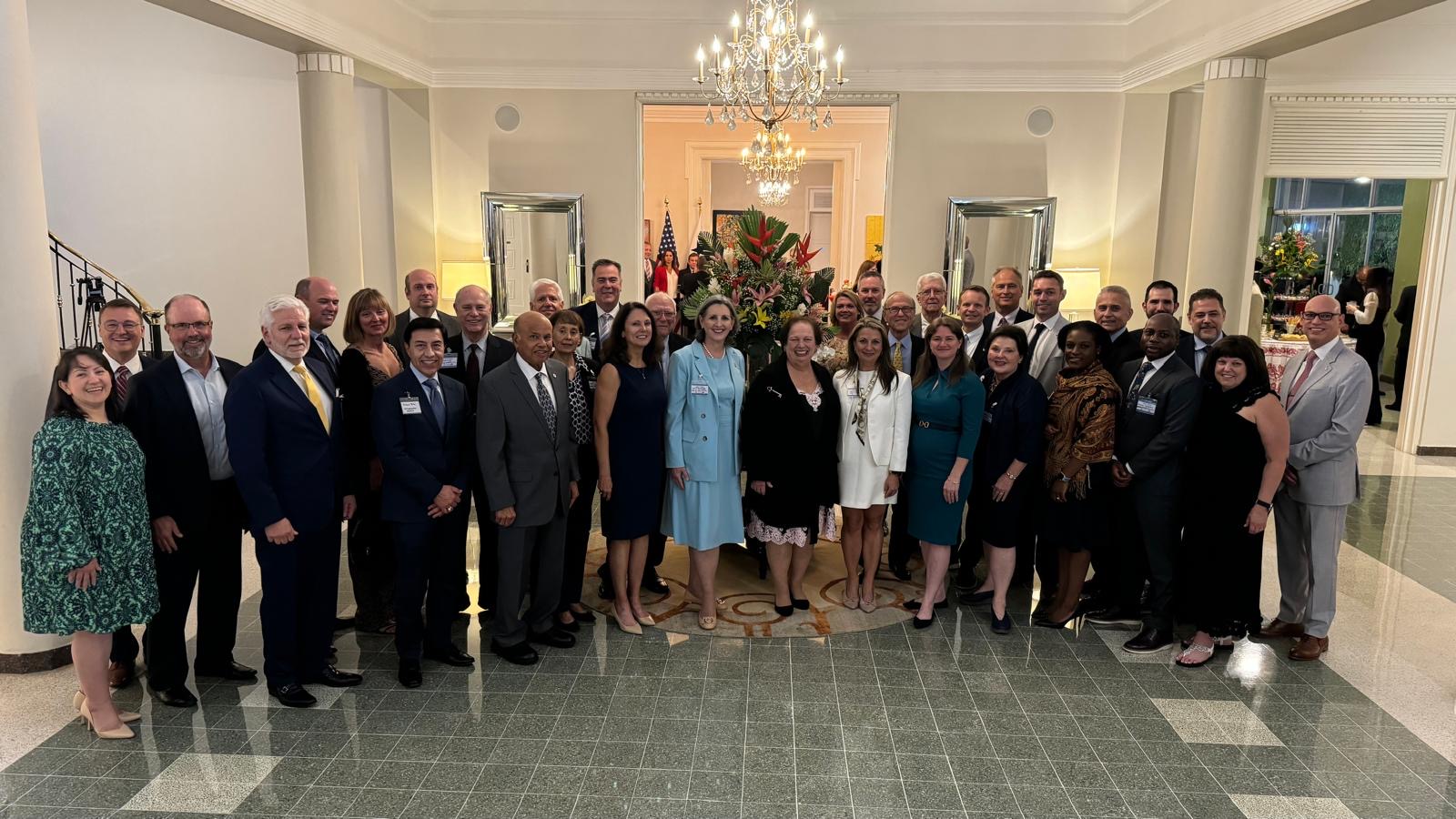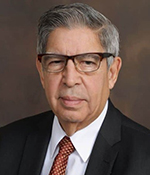Houston, Texas, and Panama: A Strategic Partnership
 The U.S.-Panama Business Council (“USPA”) began operation in 1994 in Washington, D.C., and Panama when Panama was making efforts to rekindle the special relationship it had experienced with the United States for more than one hundred years. This relationship had been impacted negatively by a political crisis in 1988-89 between the two countries. The USPA, bi-national in character, worked successfully to return the two countries to a productive relationship. With the priority of developing business opportunities, USPA moved its headquarters to Houston in 2007, where Panama already had a positive trade and investment relationship.
The U.S.-Panama Business Council (“USPA”) began operation in 1994 in Washington, D.C., and Panama when Panama was making efforts to rekindle the special relationship it had experienced with the United States for more than one hundred years. This relationship had been impacted negatively by a political crisis in 1988-89 between the two countries. The USPA, bi-national in character, worked successfully to return the two countries to a productive relationship. With the priority of developing business opportunities, USPA moved its headquarters to Houston in 2007, where Panama already had a positive trade and investment relationship.
At the time of the move, the port of Houston and the Panama Canal had developed an alliance that connected Houston with Asian markets through the canal. This alliance has continued to grow. In 2016, Panama completed its project to widen the canal and add a new set of locks to facilitate bigger and deeper ships carrying four time as many container boxes, the #1 commodity of the canal. This exponentially expanded the budding Houston-Asia trade.
That same year, the U. S. authorized the exports of hydrocarbons, thanks to the fracking process that gave a push to the energy sector. LNG terminals in the Texas Gulf, including Corpus Christi, Freeport and Sabine Pass began exporting to Asia through the canal, consolidating north and southbound trade between Houston-Asia, deepening the relationship. Houston’s Mayor Annise Parker led a trade delegation to Panama during the time of the new lock construction in 2014, branding Houston and Panama as a “Strategic Partnership”.
In the meantime, several Texas corporations began or expanded operations in Panama. Some of them established regional headquarters in the country, taking advantage of its transportation and logistics infrastructure supported by its geographical location, use of the dollar as currency, its digital structures, incentives for doing business, and air connectivity to 17 cities in the United States and more than ninety destinations in the Americas, provided by Panama’s national carrier, Copa Airlines.
The sea and air connectivity, and the trade and investment generated in Texas with companies such as Dell Technologies, Halliburton, Sysco, Kimberly Clark, Bell Helicopter, Targa Resources, Cheniere Energy, Caterpillar (that recently moved its national headquarters to Irving), and others had such an impact across the state that USPA rebranded the initiative “Texas-Panama: Strategic Partnership”, and began promoting the “Texas Triangle” of the regions of North, Central, South and Upper Gulf Coast regions as key components of the partnership.
In the 21st century, Houston exploded as the most “global city” in the U. S. According to USPA’s “USA Global Index”, Houston is the #1 city in the ratio of exports to GDP with a staggering 25% ratio; the second city is Seattle with 15%, and third is Miami with 10%. No other city in the U. S. has a ratio higher than 10%. At the same time, USPA’s “USA cities of interest for Panama Index” has Houston as #1, followed by New York and Washington, D.C. Dallas-Fort Worth, Austin and San Antonio are among the top 17 cities in the Index, making Texas the leader state.
The partnership of Houston and Texas with Panama has been 175 years in the making. It began with the first voyage of a scheduled sea route between New Orleans and Panama in 1848, with New Orleans connecting to Houston and Dallas on a railroad route that eventually connected Texas with Panama. There are other tidbits of history that connect the port of Houston directly with the Panama Canal, suggesting that faith has had to do a lot in the building of the relationship.
In 1902, President Theodore Roosevelt signed a directive to negotiate with Colombia for the building of a sea canal in Panama and separately approved the start of the Houston Ship Channel. In 1904, the U. S. started construction of the Panama Canal. By then, Panama had become an independent republic. In 1914, both mega infrastructure projects – the Panama Canal and the Houston Ship Channel - were inaugurated. During the first half of the 20th century, the two waterways developed, despite growing pains. By the second half of the century, both had become critical arteries in the sea routes of the world, starting container terminals that allowed them to grow and prosper. In the 21st century, the two have undertaken ambitious expansions, the Panama Canal building a set of new locks, and Port Houston’s Project 11, the widening and deepening of the Houston Ship Channel. It seems that someone had planned the symmetrical growth of these two waterways.
Texas is rich in water resources with twelve ports in the Gulf of Mexico, eight of them deep-water ports that include Houston, Beaumont, Port Arthur, Galveston, Texas City, Freeport, Corpus Christi and Brownsville. The ports handle the full gamut of cargo, including containers, LNG, LPG, bulk, fruits, grains, roll-on roll off for vehicles, chemicals, minerals and even cruise ships from the Port of Galveston. They are the backbone of U.S. exports’ thrust and have a special relationship with the Panama Canal covered by MOUs. In addition, Panama, the #1 Ship Registry in the world, has a merchant marine consulate in Houston, its #1 consulate in the United States, and the Texas A&M Sea Academy in Galveston is one of the top schools assisting Panama in the training of maritime professionals.
The other anchor of the relationship has been the air connectivity of the Houston-Panama City route. A merger between Continental and Copa Airlines in late 90s established the “Hub of the Americas”, whereby travelers from Houston are delivered to Panama City. Copa then transports them to capitals and other cities of South America and the Eastern Caribbean, helping make Copa the most efficient and profitable airline in the Americas. This route, serviced by United and Copa in a codeshare agreement has recently been complemented by a direct flight from Panama City to Austin by Copa Airlines.
With the explosive growth of Texas that projects the “Triangle” to 100 million by 2100, it is expected that other routes will be developed and frequencies increased, cementing the “Texas-Panama Strategic Partnership”. Although United Airlines, that absorbed Continental in a 2008 merger is no longer an investor in Copa Airlines, a marketing agreement for the Americas is in place. The improving air connectivity is making Texas a potential destination for Panamanian and South American tourists.
The educational component has also become an essential part of the partnership. Texas is the #1 state for Panamanians studying in the U. S., led by Texas A&M University. Other universities that attract Panamanians include the University of Texas-Austin, TCU, SMU, Rice University, University of Houston, Saint Edwards University and several junior colleges. University relations create special bonds that help forge friendships as well as cultural, business, and educational relationships.
In the healthcare sector, there has recently been increasing cooperation between the Texas Medical Center in Houston, recognized as the biggest in the world, with Panama in a number of areas that include training of doctors and patient care of Panamanians with chronic diseases. Technological cooperation between the Medical Center and the technology sector of Panama has been growing as well.
In 2020, USPA formalized an alliance with PROPANAMA, the agency of the government of Panama responsible for promoting international trade and attracting investments. In the last four years, the alliance has carried out 18 programs and held 62 events between Panama and several cities in Texas, part of the “Texas Triangle”. In June 2024, USPA organized a 46-member trade mission to Panama, the largest USPA has ever organized, giving evidence to the interest that exists in Texas for Panama, not only because of opportunities in the country but also because the potential role it offers as the axis for the expansion of Texas into South America, taking advantage of Panama’s regional logistics center.
 June 2024 Panama and the Texas Triangle meeting delegation in Panama.
June 2024 Panama and the Texas Triangle meeting delegation in Panama.
The close relationship between Texas and Panama has also been fueled by the large number of Panamanians living in the state, led by Houston and followed by San Antonio, North Texas and Austin. Most of the Panamanians in Texas have dual nationality, joining the U.S. armed forces - thanks to the 13 military bases the United States formerly had in the Southern Command in Panama. With the large number of military bases in Texas, especially around San Antonio (sometimes called “U.S. Military City”), many Panamanians retired from military bases in San Antonio and stayed in the area. Another city that has been an attraction for Panamanians is Killeen in Central Texas where Fort Hood is located. Texas is the third largest state in Panamanian population after New York and Florida.
The future of the Texas-Panama relationship is bright. After the recent trade mission to Panama, chapters of the “Strategic Partnership” are being formed in key cities of the “Triangle” to build clusters to address specific sectors and expand opportunities. This is looked at as an economic development initiative with sustainability, much more than a mere business relationship. We invite and welcome the participation of all friends of the Texas-Panama Partnership to this exciting initiative.
About the Author

Ambassador Juan B. Sosa
Former board member of the Panama Canal Commission
and former chairman of the Board of Air Panama
panamerica@msn.com
